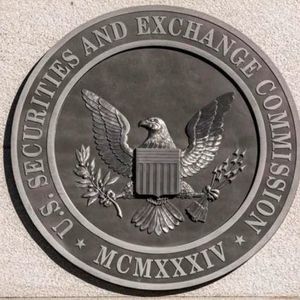Is the Japanese Yen about to defy expectations? Despite growing anticipation of further interest rate hikes by the Bank of Japan (BoJ), the bearish sentiment surrounding the Yen appears surprisingly restrained. Let’s dive into why Yen bears are seemingly hesitant and what this means for the USD/JPY pair and the broader Forex market. Why Aren’t Yen Bears Pouncing Despite BoJ Rate Hike Buzz? The Japanese Yen (JPY) recently pulled back after hitting a one-week high against the US Dollar, a move that might seem counterintuitive given the increasing chatter about the BoJ tightening its monetary policy. Several factors are at play, creating a complex scenario where outright Yen bearishness is tempered: BoJ Rate Hike Expectations: Markets are increasingly pricing in additional interest rate hikes from the Bank of Japan this year. This expectation alone should, in theory, strengthen the Yen. Narrowing US-Japan Yield Differential: The gap between US and Japanese bond yields is shrinking. This is largely due to bets on the Federal Reserve (Fed) cutting interest rates, making the lower-yielding Yen relatively more attractive. Essentially, while the fundamental backdrop of potential BoJ rate hikes should be supportive of the Yen, other global factors and expectations are creating a tug-of-war, preventing a full-blown bearish assault on the JPY. Global Uncertainty: Safe Haven Demand Dwindles Traditionally, the Japanese Yen benefits from its safe-haven status during times of global uncertainty. However, recent developments are diminishing this appeal: Trump Tariff Talk Delay: Optimism surrounding a possible delay in the implementation of US President Trump’s reciprocal tariffs is easing trade war fears. Russia-Ukraine War Talks: Hopes for peace talks between the US and Russia regarding the Ukraine conflict are also boosting market sentiment. These positive developments reduce the demand for safe-haven assets like the Yen, putting downward pressure on its value. Investors are seemingly less fearful, and this “risk-on” sentiment is not typically favorable for the JPY. USD Strength Adds Another Layer to the USD/JPY Equation The US Dollar (USD) is showing signs of life, further complicating the USD/JPY outlook: Rising US Treasury Yields: A recent uptick in US Treasury bond yields is supporting the Dollar. Snapping Losing Streak: The USD is attempting to recover from a three-day losing streak, adding to the upward pressure on the USD/JPY pair. This renewed USD strength is partially offsetting any potential Yen gains from rate hikes expectations, contributing to the non-committal stance of Yen bears. Decoding the Data: Japan’s Economy and Fed’s Dilemma Economic data from both Japan and the US is playing a crucial role in shaping the Japanese Yen and USD dynamics: Japan’s Strong Economic Signals: Strong Inflation: Robust inflation figures out of Japan are reinforcing the case for BoJ action. Solid GDP Growth: Strong Q4 GDP data further solidifies the argument for imminent rate hikes by the BoJ. Market Pricing: Markets are now anticipating approximately 37 basis points of additional rate increases by December, pushing Japanese government bond yields to levels not seen since 2010. US Economic Mixed Signals: Retail Sales Dip: A surprise drop in US Retail Sales introduces uncertainty about the strength of the US economy. Mixed Inflation Signals: Conflicting inflation indicators are making the Fed’s policy path less clear. Potential Fed Rate Cuts: Despite some Fed officials advocating for steady policy, market expectations for Fed rate cuts later in the year (September or October) persist. This divergence in economic signals and central bank stances creates a push-and-pull effect on the USD/JPY, contributing to the current state of flux. Fed Speak: Navigating Conflicting Signals Recent comments from Federal Reserve officials highlight the uncertainty surrounding future monetary policy: Harker’s Steady Policy Stance: Philadelphia Fed President Patrick Harker suggests a steady policy approach given the balanced labor market and sticky inflation. Bowman’s Asset Price Concerns: Fed Governor Michelle Bowman points to high asset prices potentially hindering inflation progress, emphasizing the need for more certainty before rate cuts. Waller’s Data-Dependent Approach: Fed Governor Christopher Waller indicates that rate cuts in 2025 would be appropriate if inflation trends mirror 2024. Despite these cautious tones, Fed Funds Futures still indicate expectations for rate cuts in 2025, which continues to pressure US Treasury yields and narrow the US-Japan yield differential. Technical View: USD/JPY Bears Hold Some Cards From a technical analysis perspective, the USD/JPY chart suggests a potential bearish bias, at least in the short term: Failed Retracement: Last week’s failure to break above the 50% retracement level and subsequent drop below the 200-day Simple Moving Average (SMA) favor bearish traders. Negative Oscillators: Oscillators on the daily chart remain in negative territory, indicating further downside potential. Key Resistance Levels: The 152.00 and 152.65 (200-day SMA) levels are likely to act as strong resistance, potentially capping any upward movements. Support Levels to Watch: Immediate support lies around 151.25, followed by the 151.00-150.90 zone (year-to-date low). A break below this could open the door to further declines towards 150.00 and lower levels. Traders are closely watching the 152.65 area (200-day SMA). Staying below this level could reinforce the bearish outlook, while a break above might signal a potential shift in momentum. Understanding the Fed and Tariffs: Key FAQs To better understand the forces influencing the Japanese Yen and USD, let’s address some frequently asked questions about the Federal Reserve and tariffs: Fed FAQs: Question Answer What does the Federal Reserve do? The Fed manages US monetary policy, aiming for price stability and full employment, primarily by adjusting interest rates. How do Fed actions impact the US Dollar? Raising rates typically strengthens the USD, while lowering rates weakens it. How often does the Fed meet? The Fed holds eight policy meetings per year. What is Quantitative Easing (QE)? QE is a policy where the Fed injects liquidity by buying bonds, usually weakening the USD. What is Quantitative Tightening (QT)? QT is the reverse of QE, where the Fed reduces its balance sheet, typically strengthening the USD. Tariffs FAQs: Question Answer What are tariffs? Tariffs are taxes on imported goods, designed to protect domestic industries. Tariffs vs. Taxes? Tariffs are on imports, prepaid at entry; taxes are broader, paid at purchase. Are tariffs good or bad? Economists debate their impact; they can protect industries but also raise prices and trigger trade wars. Trump’s tariff plan? Trump aims to use tariffs to support US producers, focusing on countries like Mexico, China, and Canada, and potentially use revenue to cut income taxes. Conclusion: A Wait-and-See Approach for Yen Bears In conclusion, while the fundamental drivers for a stronger Japanese Yen – namely, anticipated BoJ rate hikes – are in place, a confluence of global factors and mixed signals from the US economy are keeping Yen bears at bay. The USD/JPY pair remains in a delicate balance, influenced by shifting risk sentiment, USD strength, and the diverging paths of the BoJ and the Fed. For now, the market seems to be adopting a cautious, wait-and-see approach, as traders assess incoming economic data and central bank communications to gauge the next decisive move in the Japanese Yen . To learn more about the latest Forex market trends, explore our article on key developments shaping US Dollar and interest rates liquidity.
















